Protococcus Cut Out Stock Images
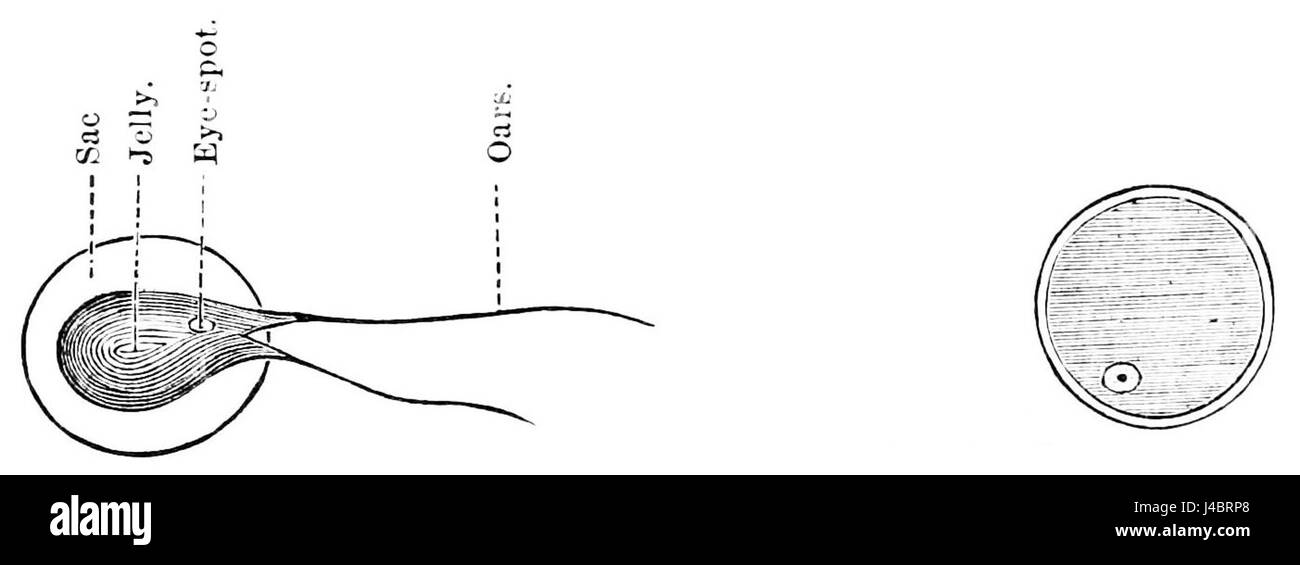 PSM V06 D359 Protococcus cells Stock Photohttps://www.alamy.com/image-license-details/?v=1https://www.alamy.com/stock-photo-psm-v06-d359-protococcus-cells-140401696.html
PSM V06 D359 Protococcus cells Stock Photohttps://www.alamy.com/image-license-details/?v=1https://www.alamy.com/stock-photo-psm-v06-d359-protococcus-cells-140401696.htmlRMJ4BRP8–PSM V06 D359 Protococcus cells
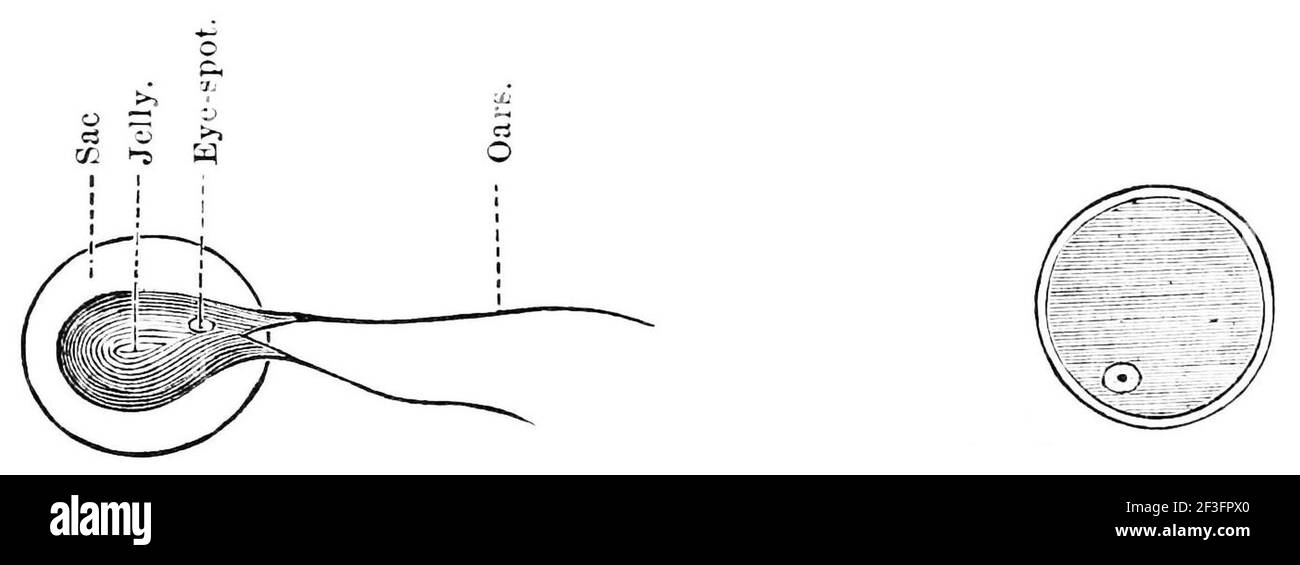 Protococcus cells. Stock Photohttps://www.alamy.com/image-license-details/?v=1https://www.alamy.com/protococcus-cells-image415240056.html
Protococcus cells. Stock Photohttps://www.alamy.com/image-license-details/?v=1https://www.alamy.com/protococcus-cells-image415240056.htmlRM2F3FPX0–Protococcus cells.
 A typical representation of Protococcus, a genus of single-celled algae often forming a yellowish-green stratum on trees' damp walls, and in shallow p Stock Vectorhttps://www.alamy.com/image-license-details/?v=1https://www.alamy.com/a-typical-representation-of-protococcus-a-genus-of-single-celled-algae-often-forming-a-yellowish-green-stratum-on-trees-damp-walls-and-in-shallow-p-image359329192.html
A typical representation of Protococcus, a genus of single-celled algae often forming a yellowish-green stratum on trees' damp walls, and in shallow p Stock Vectorhttps://www.alamy.com/image-license-details/?v=1https://www.alamy.com/a-typical-representation-of-protococcus-a-genus-of-single-celled-algae-often-forming-a-yellowish-green-stratum-on-trees-damp-walls-and-in-shallow-p-image359329192.htmlRF2BTGT1C–A typical representation of Protococcus, a genus of single-celled algae often forming a yellowish-green stratum on trees' damp walls, and in shallow p
 Gruene Schiffchenalge, Navicula viridis (3. von oben Mitte), Staebchenalge, Diatoma flocculosum (4. von oben Mitte), Stueckchenalge, Frustulia (2. von unten Mitte), Spiralbandalge, Spirogyra quinina (oben Mitte), Einzellige Alge, Protococcus viridis (2.von oben Mitte), Flachsalge, Conferva linum (2. von oben rechts), Blasentang, Braunalge, Fucus vesiculosus (rechts unten), Beerentang, Sargassum bacciferum), Gemeine Froschlaichalge, Batrachospermum moniliforme (2. und 3. unten von links), Roter Knorpeltang, Gelidium corneum (rechts oben), Purpurner Kammtang, Plocamium coccineum (2. und 3. von Stock Photohttps://www.alamy.com/image-license-details/?v=1https://www.alamy.com/stock-photo-gruene-schiffchenalge-navicula-viridis-3-von-oben-mitte-staebchenalge-121257313.html
Gruene Schiffchenalge, Navicula viridis (3. von oben Mitte), Staebchenalge, Diatoma flocculosum (4. von oben Mitte), Stueckchenalge, Frustulia (2. von unten Mitte), Spiralbandalge, Spirogyra quinina (oben Mitte), Einzellige Alge, Protococcus viridis (2.von oben Mitte), Flachsalge, Conferva linum (2. von oben rechts), Blasentang, Braunalge, Fucus vesiculosus (rechts unten), Beerentang, Sargassum bacciferum), Gemeine Froschlaichalge, Batrachospermum moniliforme (2. und 3. unten von links), Roter Knorpeltang, Gelidium corneum (rechts oben), Purpurner Kammtang, Plocamium coccineum (2. und 3. von Stock Photohttps://www.alamy.com/image-license-details/?v=1https://www.alamy.com/stock-photo-gruene-schiffchenalge-navicula-viridis-3-von-oben-mitte-staebchenalge-121257313.htmlRFH17MX9–Gruene Schiffchenalge, Navicula viridis (3. von oben Mitte), Staebchenalge, Diatoma flocculosum (4. von oben Mitte), Stueckchenalge, Frustulia (2. von unten Mitte), Spiralbandalge, Spirogyra quinina (oben Mitte), Einzellige Alge, Protococcus viridis (2.von oben Mitte), Flachsalge, Conferva linum (2. von oben rechts), Blasentang, Braunalge, Fucus vesiculosus (rechts unten), Beerentang, Sargassum bacciferum), Gemeine Froschlaichalge, Batrachospermum moniliforme (2. und 3. unten von links), Roter Knorpeltang, Gelidium corneum (rechts oben), Purpurner Kammtang, Plocamium coccineum (2. und 3. von
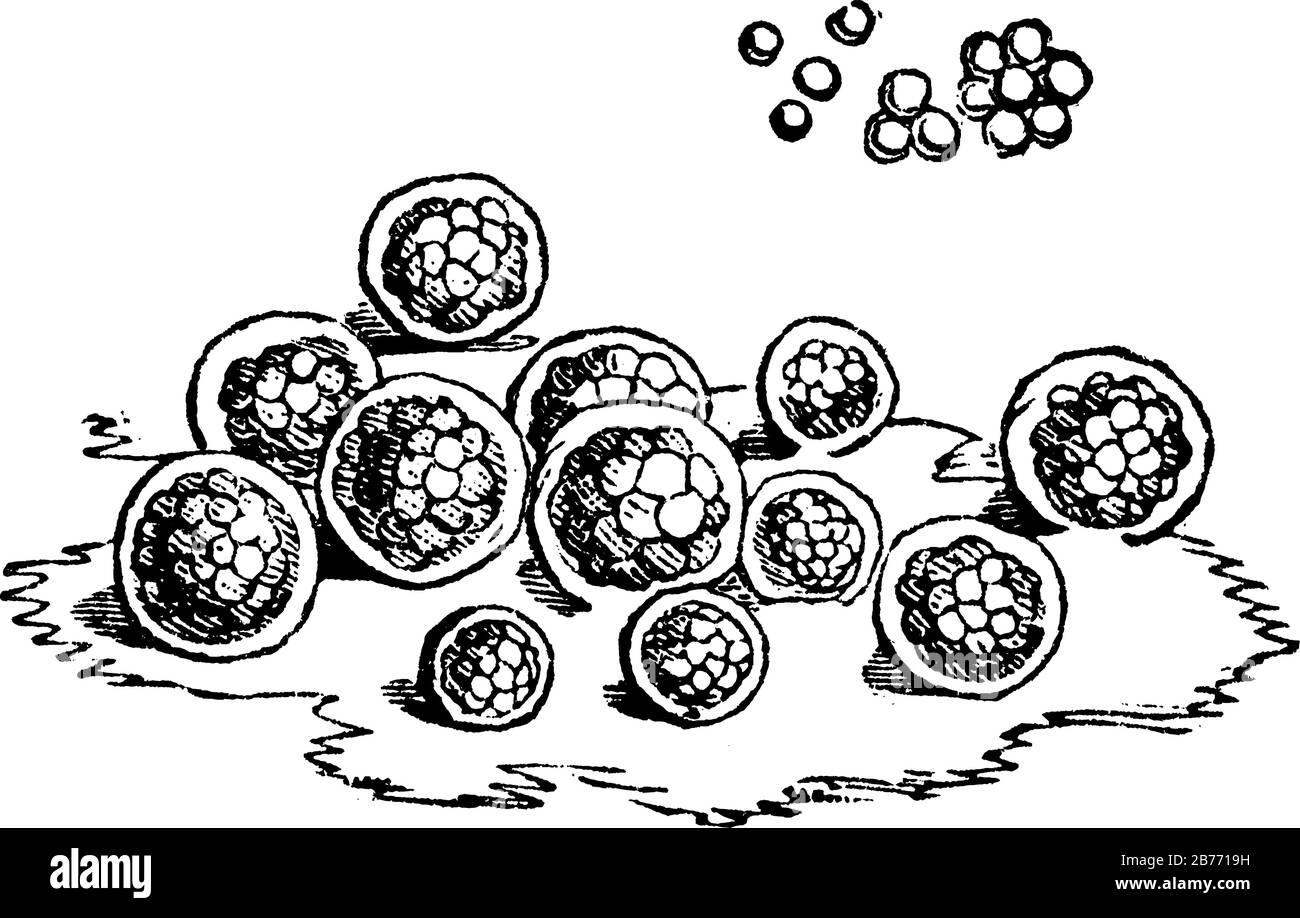 Appears on the surface of snow, tinging extensive tracts in the Arctic regions or amongst the Alps, in a short space of time, with a deep crimson, vin Stock Vectorhttps://www.alamy.com/image-license-details/?v=1https://www.alamy.com/appears-on-the-surface-of-snow-tinging-extensive-tracts-in-the-arctic-regions-or-amongst-the-alps-in-a-short-space-of-time-with-a-deep-crimson-vin-image348664669.html
Appears on the surface of snow, tinging extensive tracts in the Arctic regions or amongst the Alps, in a short space of time, with a deep crimson, vin Stock Vectorhttps://www.alamy.com/image-license-details/?v=1https://www.alamy.com/appears-on-the-surface-of-snow-tinging-extensive-tracts-in-the-arctic-regions-or-amongst-the-alps-in-a-short-space-of-time-with-a-deep-crimson-vin-image348664669.htmlRF2B7719H–Appears on the surface of snow, tinging extensive tracts in the Arctic regions or amongst the Alps, in a short space of time, with a deep crimson, vin
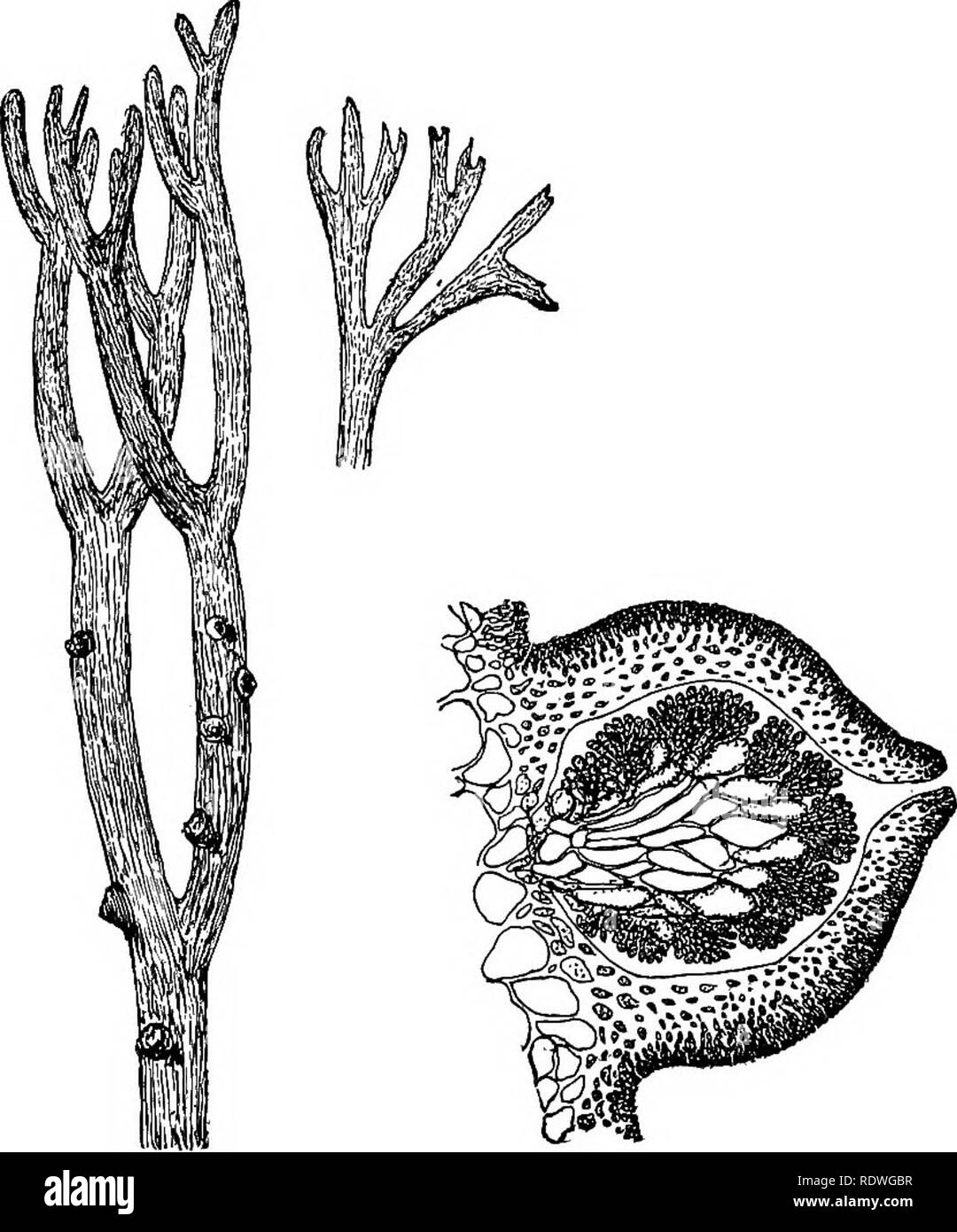 . Elementary botany. Botany. n8 MORPHOLOG Y.. Fig. 126. Fig. 127. Gracillaria, portion of frond, Gracillaria, section of cystocarp showing position of cysto- showing spores, carps. 273. The principal groups of the algse are the following: ChlorophycecB. Green algae. ' Protococcoideas (the protococcus (Pleurococ- cus vulgaris); the red-snow plant (Sphaerella nivalis), etc. Conjugatese (spirogyra, zygnema, mougeotia, desmids, etc.). Siphoneae (vaucheria). Confervoideas (oedogonium, chaetophora, cole- ochaete). Cyanophycece (nostoc, oscillatoria, etc.). The blue-green algee. Phceophyceoa (fucus, Stock Photohttps://www.alamy.com/image-license-details/?v=1https://www.alamy.com/elementary-botany-botany-n8-morpholog-y-fig-126-fig-127-gracillaria-portion-of-frond-gracillaria-section-of-cystocarp-showing-position-of-cysto-showing-spores-carps-273-the-principal-groups-of-the-algse-are-the-following-chlorophycecb-green-algae-protococcoideas-the-protococcus-pleurococ-cus-vulgaris-the-red-snow-plant-sphaerella-nivalis-etc-conjugatese-spirogyra-zygnema-mougeotia-desmids-etc-siphoneae-vaucheria-confervoideas-oedogonium-chaetophora-cole-ochaete-cyanophycece-nostoc-oscillatoria-etc-the-blue-green-algee-phceophyceoa-fucus-image232286987.html
. Elementary botany. Botany. n8 MORPHOLOG Y.. Fig. 126. Fig. 127. Gracillaria, portion of frond, Gracillaria, section of cystocarp showing position of cysto- showing spores, carps. 273. The principal groups of the algse are the following: ChlorophycecB. Green algae. ' Protococcoideas (the protococcus (Pleurococ- cus vulgaris); the red-snow plant (Sphaerella nivalis), etc. Conjugatese (spirogyra, zygnema, mougeotia, desmids, etc.). Siphoneae (vaucheria). Confervoideas (oedogonium, chaetophora, cole- ochaete). Cyanophycece (nostoc, oscillatoria, etc.). The blue-green algee. Phceophyceoa (fucus, Stock Photohttps://www.alamy.com/image-license-details/?v=1https://www.alamy.com/elementary-botany-botany-n8-morpholog-y-fig-126-fig-127-gracillaria-portion-of-frond-gracillaria-section-of-cystocarp-showing-position-of-cysto-showing-spores-carps-273-the-principal-groups-of-the-algse-are-the-following-chlorophycecb-green-algae-protococcoideas-the-protococcus-pleurococ-cus-vulgaris-the-red-snow-plant-sphaerella-nivalis-etc-conjugatese-spirogyra-zygnema-mougeotia-desmids-etc-siphoneae-vaucheria-confervoideas-oedogonium-chaetophora-cole-ochaete-cyanophycece-nostoc-oscillatoria-etc-the-blue-green-algee-phceophyceoa-fucus-image232286987.htmlRMRDWGBR–. Elementary botany. Botany. n8 MORPHOLOG Y.. Fig. 126. Fig. 127. Gracillaria, portion of frond, Gracillaria, section of cystocarp showing position of cysto- showing spores, carps. 273. The principal groups of the algse are the following: ChlorophycecB. Green algae. ' Protococcoideas (the protococcus (Pleurococ- cus vulgaris); the red-snow plant (Sphaerella nivalis), etc. Conjugatese (spirogyra, zygnema, mougeotia, desmids, etc.). Siphoneae (vaucheria). Confervoideas (oedogonium, chaetophora, cole- ochaete). Cyanophycece (nostoc, oscillatoria, etc.). The blue-green algee. Phceophyceoa (fucus,
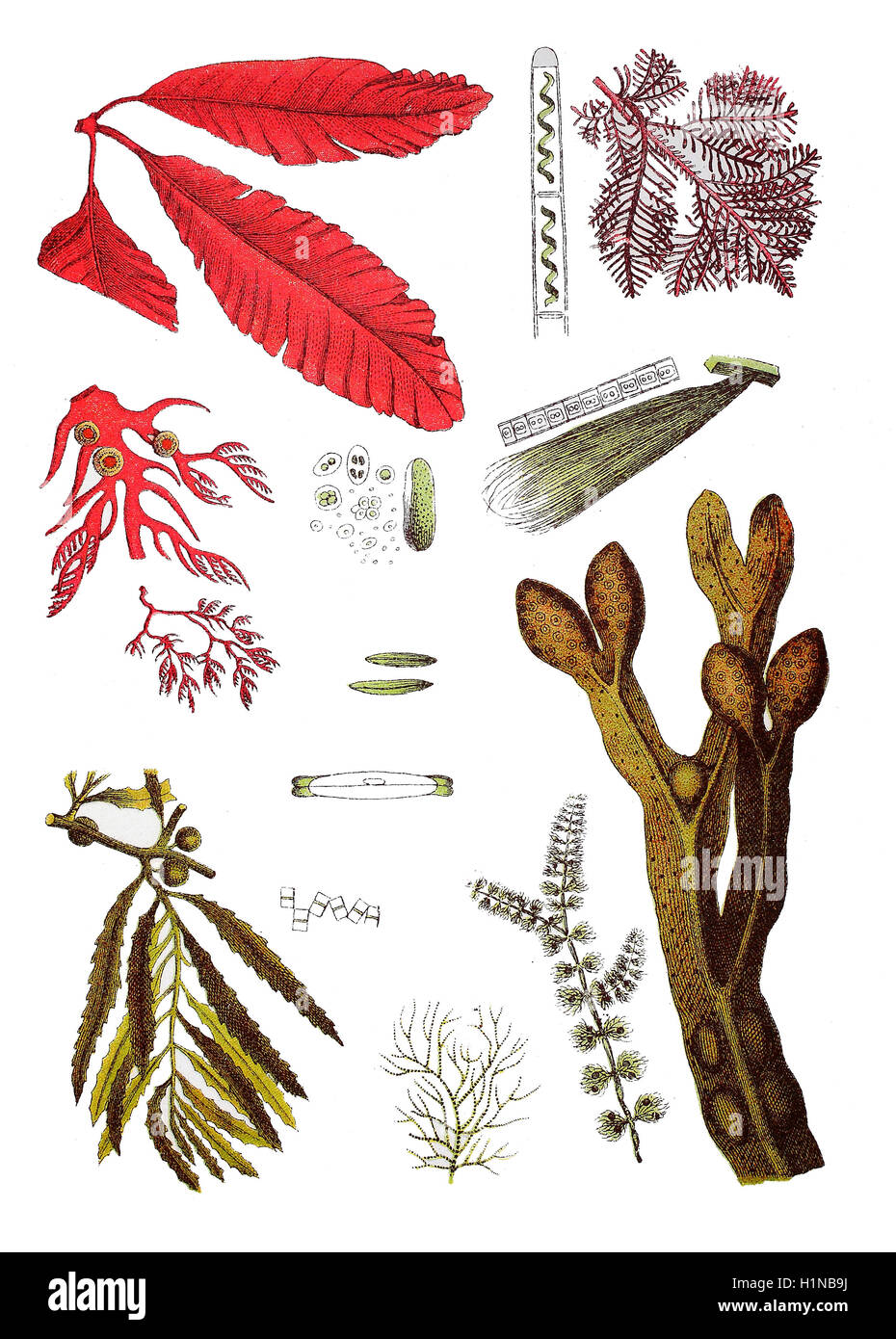 Navicula, Navicula viridis (3. von top center), Alga, Diatoma flocculosum (4. von top center), Alga, Frustulia (2. von bottem center), Spirogyra, Spirogyra quinina (top center), Alga, Protococcus viridis (2.von top center), Alga, Conferva linum (2. von top right), Bladder wrack, Fucus vesiculosus (right bottem), Sargassum, (Sargassum bacciferum), Alga, Batrachospermum moniliforme (2. und 3. bottem von left), Seaweed, Gelidium corneum (right top), Seaweedg, Plocamium coccineum (2. und 3. von top left), Delesseria, Delesseria sanguinea (top left) Stock Photohttps://www.alamy.com/image-license-details/?v=1https://www.alamy.com/stock-photo-navicula-navicula-viridis-3-von-top-center-alga-diatoma-flocculosum-121557118.html
Navicula, Navicula viridis (3. von top center), Alga, Diatoma flocculosum (4. von top center), Alga, Frustulia (2. von bottem center), Spirogyra, Spirogyra quinina (top center), Alga, Protococcus viridis (2.von top center), Alga, Conferva linum (2. von top right), Bladder wrack, Fucus vesiculosus (right bottem), Sargassum, (Sargassum bacciferum), Alga, Batrachospermum moniliforme (2. und 3. bottem von left), Seaweed, Gelidium corneum (right top), Seaweedg, Plocamium coccineum (2. und 3. von top left), Delesseria, Delesseria sanguinea (top left) Stock Photohttps://www.alamy.com/image-license-details/?v=1https://www.alamy.com/stock-photo-navicula-navicula-viridis-3-von-top-center-alga-diatoma-flocculosum-121557118.htmlRFH1NB9J–Navicula, Navicula viridis (3. von top center), Alga, Diatoma flocculosum (4. von top center), Alga, Frustulia (2. von bottem center), Spirogyra, Spirogyra quinina (top center), Alga, Protococcus viridis (2.von top center), Alga, Conferva linum (2. von top right), Bladder wrack, Fucus vesiculosus (right bottem), Sargassum, (Sargassum bacciferum), Alga, Batrachospermum moniliforme (2. und 3. bottem von left), Seaweed, Gelidium corneum (right top), Seaweedg, Plocamium coccineum (2. und 3. von top left), Delesseria, Delesseria sanguinea (top left)
 . Textbook of botany. Botany. 52 TEXTBOOK OF BOTANY about fifteen times the weight of all the fish hatched in the same river in the course of a year. The plankton includes various one-celled alga; more or less like Protococcus, as well- as many species that form small colo- nies. Algffi as large as Spirogyra are not ordinarily thought of as belonging to the plankton ; the use of the term is commonly limited to organisms that are microscopic or but little larger. The plankton algae, building up their bodies as we have seen that Spirogyra does out of the simple substances that are dissolved in t Stock Photohttps://www.alamy.com/image-license-details/?v=1https://www.alamy.com/textbook-of-botany-botany-52-textbook-of-botany-about-fifteen-times-the-weight-of-all-the-fish-hatched-in-the-same-river-in-the-course-of-a-year-the-plankton-includes-various-one-celled-alga-more-or-less-like-protococcus-as-well-as-many-species-that-form-small-colo-nies-algffi-as-large-as-spirogyra-are-not-ordinarily-thought-of-as-belonging-to-the-plankton-the-use-of-the-term-is-commonly-limited-to-organisms-that-are-microscopic-or-but-little-larger-the-plankton-algae-building-up-their-bodies-as-we-have-seen-that-spirogyra-does-out-of-the-simple-substances-that-are-dissolved-in-t-image232272087.html
. Textbook of botany. Botany. 52 TEXTBOOK OF BOTANY about fifteen times the weight of all the fish hatched in the same river in the course of a year. The plankton includes various one-celled alga; more or less like Protococcus, as well- as many species that form small colo- nies. Algffi as large as Spirogyra are not ordinarily thought of as belonging to the plankton ; the use of the term is commonly limited to organisms that are microscopic or but little larger. The plankton algae, building up their bodies as we have seen that Spirogyra does out of the simple substances that are dissolved in t Stock Photohttps://www.alamy.com/image-license-details/?v=1https://www.alamy.com/textbook-of-botany-botany-52-textbook-of-botany-about-fifteen-times-the-weight-of-all-the-fish-hatched-in-the-same-river-in-the-course-of-a-year-the-plankton-includes-various-one-celled-alga-more-or-less-like-protococcus-as-well-as-many-species-that-form-small-colo-nies-algffi-as-large-as-spirogyra-are-not-ordinarily-thought-of-as-belonging-to-the-plankton-the-use-of-the-term-is-commonly-limited-to-organisms-that-are-microscopic-or-but-little-larger-the-plankton-algae-building-up-their-bodies-as-we-have-seen-that-spirogyra-does-out-of-the-simple-substances-that-are-dissolved-in-t-image232272087.htmlRMRDTWBK–. Textbook of botany. Botany. 52 TEXTBOOK OF BOTANY about fifteen times the weight of all the fish hatched in the same river in the course of a year. The plankton includes various one-celled alga; more or less like Protococcus, as well- as many species that form small colo- nies. Algffi as large as Spirogyra are not ordinarily thought of as belonging to the plankton ; the use of the term is commonly limited to organisms that are microscopic or but little larger. The plankton algae, building up their bodies as we have seen that Spirogyra does out of the simple substances that are dissolved in t
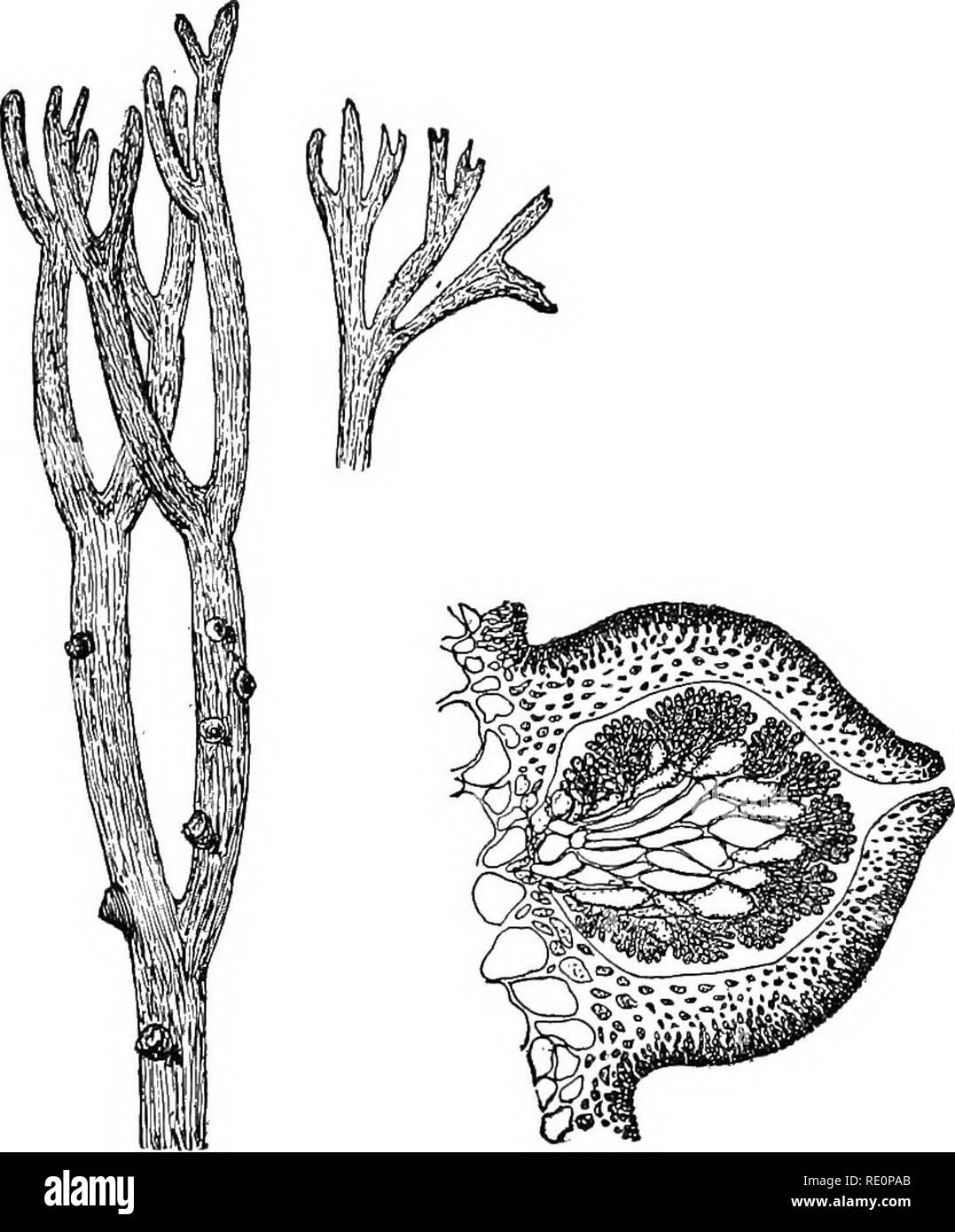 . Elementary botany. Botany. ii8 MORPHOLOG Y.. Fig. 126. Fig. 127. Gracillaria, portion of frond, Gracillaria, section of cystocarp showing position of cysto- showing spores, carps. 273. The principal groups of the algse are the following: ChlorophycecB. Green algse. Protococcoidese (the protococcus (Pleurococ- cus vulgaris); the red-snow plant (Sphserella nivalis), etc. Conjugateae (spirogyra, zygnema, Inougeotia, desniids, etc.). Siphonese (vaucheria). Confervoidese (oedogonium, chcetophora, cole- ochaete). CyanophycecB (nostoc, oscillatoria, etc.). The blue-green algse. PkcBophycecB (fucus, Stock Photohttps://www.alamy.com/image-license-details/?v=1https://www.alamy.com/elementary-botany-botany-ii8-morpholog-y-fig-126-fig-127-gracillaria-portion-of-frond-gracillaria-section-of-cystocarp-showing-position-of-cysto-showing-spores-carps-273-the-principal-groups-of-the-algse-are-the-following-chlorophycecb-green-algse-protococcoidese-the-protococcus-pleurococ-cus-vulgaris-the-red-snow-plant-sphserella-nivalis-etc-conjugateae-spirogyra-zygnema-inougeotia-desniids-etc-siphonese-vaucheria-confervoidese-oedogonium-chcetophora-cole-ochaete-cyanophycecb-nostoc-oscillatoria-etc-the-blue-green-algse-pkcbophycecb-fucus-image232357507.html
. Elementary botany. Botany. ii8 MORPHOLOG Y.. Fig. 126. Fig. 127. Gracillaria, portion of frond, Gracillaria, section of cystocarp showing position of cysto- showing spores, carps. 273. The principal groups of the algse are the following: ChlorophycecB. Green algse. Protococcoidese (the protococcus (Pleurococ- cus vulgaris); the red-snow plant (Sphserella nivalis), etc. Conjugateae (spirogyra, zygnema, Inougeotia, desniids, etc.). Siphonese (vaucheria). Confervoidese (oedogonium, chcetophora, cole- ochaete). CyanophycecB (nostoc, oscillatoria, etc.). The blue-green algse. PkcBophycecB (fucus, Stock Photohttps://www.alamy.com/image-license-details/?v=1https://www.alamy.com/elementary-botany-botany-ii8-morpholog-y-fig-126-fig-127-gracillaria-portion-of-frond-gracillaria-section-of-cystocarp-showing-position-of-cysto-showing-spores-carps-273-the-principal-groups-of-the-algse-are-the-following-chlorophycecb-green-algse-protococcoidese-the-protococcus-pleurococ-cus-vulgaris-the-red-snow-plant-sphserella-nivalis-etc-conjugateae-spirogyra-zygnema-inougeotia-desniids-etc-siphonese-vaucheria-confervoidese-oedogonium-chcetophora-cole-ochaete-cyanophycecb-nostoc-oscillatoria-etc-the-blue-green-algse-pkcbophycecb-fucus-image232357507.htmlRMRE0PAB–. Elementary botany. Botany. ii8 MORPHOLOG Y.. Fig. 126. Fig. 127. Gracillaria, portion of frond, Gracillaria, section of cystocarp showing position of cysto- showing spores, carps. 273. The principal groups of the algse are the following: ChlorophycecB. Green algse. Protococcoidese (the protococcus (Pleurococ- cus vulgaris); the red-snow plant (Sphserella nivalis), etc. Conjugateae (spirogyra, zygnema, Inougeotia, desniids, etc.). Siphonese (vaucheria). Confervoidese (oedogonium, chcetophora, cole- ochaete). CyanophycecB (nostoc, oscillatoria, etc.). The blue-green algse. PkcBophycecB (fucus,
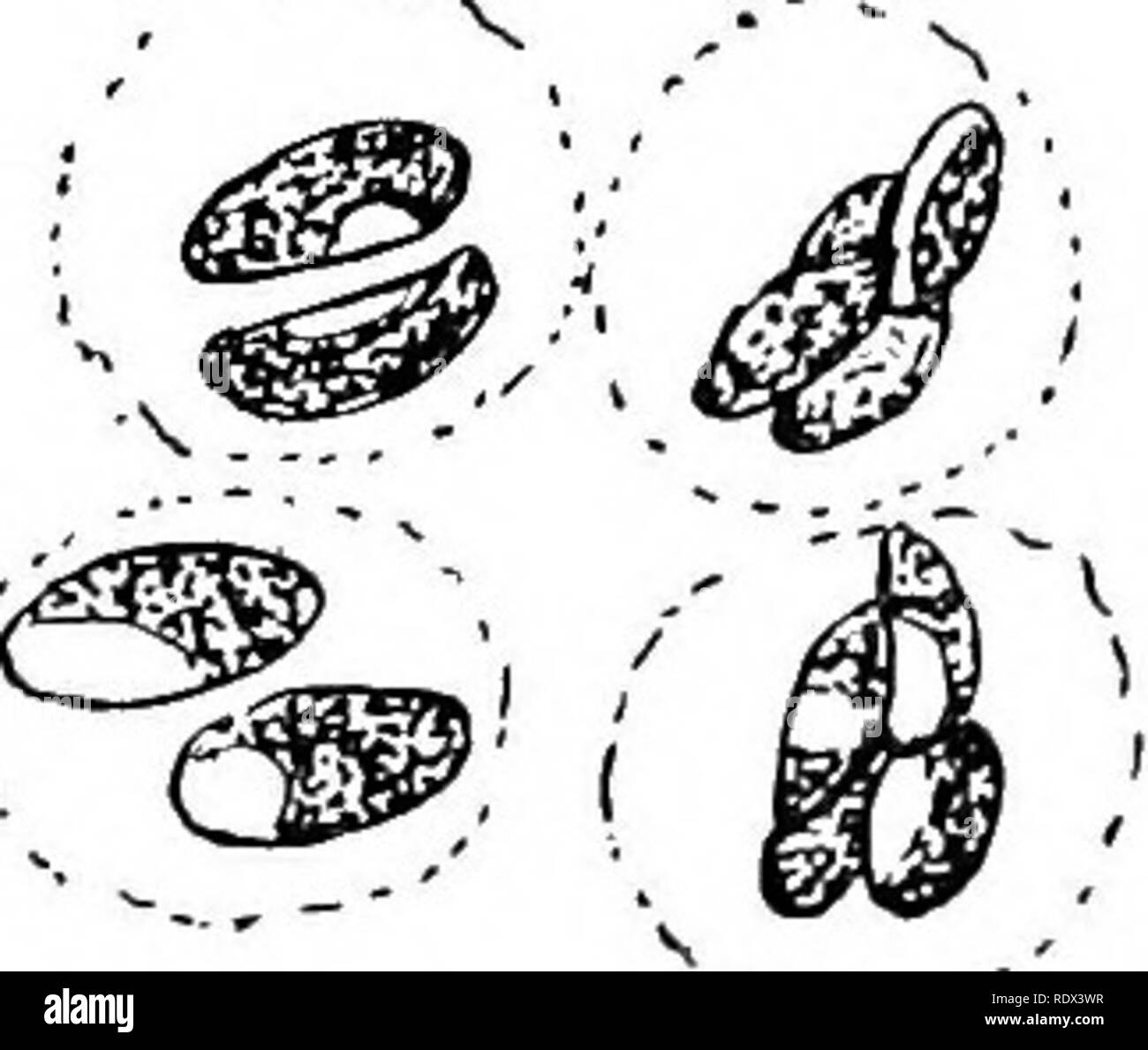 . Lichens. Lichens. LICHEN ALGAE 57 Coccomyxa subellipsoidea is given' as the gonidium of the primitive lichen Botrydina vulgaris {¥[g. 25). The cells are surrounded by a common gelatinous sheath.. Fig. 34. Coccobotrys Verritcariae Chod. from culture x 800 (after Chodat). Fig. 25. Coccomyxa subellipsoidea Acton. Actively dividing cells, the dark portions indicating the chloroplasts x tooo (after Acton). 5. DiPLOSPHAERA Bial.' D. Chodati was taken from the thallus of Lecanora tartarea and successfully cultivated. It resembles Protococcus, but has smaller cells and grows more rapidly; it is evid Stock Photohttps://www.alamy.com/image-license-details/?v=1https://www.alamy.com/lichens-lichens-lichen-algae-57-coccomyxa-subellipsoidea-is-given-as-the-gonidium-of-the-primitive-lichen-botrydina-vulgaris-g-25-the-cells-are-surrounded-by-a-common-gelatinous-sheath-fig-34-coccobotrys-verritcariae-chod-from-culture-x-800-after-chodat-fig-25-coccomyxa-subellipsoidea-acton-actively-dividing-cells-the-dark-portions-indicating-the-chloroplasts-x-tooo-after-acton-5-diplosphaera-bial-d-chodati-was-taken-from-the-thallus-of-lecanora-tartarea-and-successfully-cultivated-it-resembles-protococcus-but-has-smaller-cells-and-grows-more-rapidly-it-is-evid-image232299139.html
. Lichens. Lichens. LICHEN ALGAE 57 Coccomyxa subellipsoidea is given' as the gonidium of the primitive lichen Botrydina vulgaris {¥[g. 25). The cells are surrounded by a common gelatinous sheath.. Fig. 34. Coccobotrys Verritcariae Chod. from culture x 800 (after Chodat). Fig. 25. Coccomyxa subellipsoidea Acton. Actively dividing cells, the dark portions indicating the chloroplasts x tooo (after Acton). 5. DiPLOSPHAERA Bial.' D. Chodati was taken from the thallus of Lecanora tartarea and successfully cultivated. It resembles Protococcus, but has smaller cells and grows more rapidly; it is evid Stock Photohttps://www.alamy.com/image-license-details/?v=1https://www.alamy.com/lichens-lichens-lichen-algae-57-coccomyxa-subellipsoidea-is-given-as-the-gonidium-of-the-primitive-lichen-botrydina-vulgaris-g-25-the-cells-are-surrounded-by-a-common-gelatinous-sheath-fig-34-coccobotrys-verritcariae-chod-from-culture-x-800-after-chodat-fig-25-coccomyxa-subellipsoidea-acton-actively-dividing-cells-the-dark-portions-indicating-the-chloroplasts-x-tooo-after-acton-5-diplosphaera-bial-d-chodati-was-taken-from-the-thallus-of-lecanora-tartarea-and-successfully-cultivated-it-resembles-protococcus-but-has-smaller-cells-and-grows-more-rapidly-it-is-evid-image232299139.htmlRMRDX3WR–. Lichens. Lichens. LICHEN ALGAE 57 Coccomyxa subellipsoidea is given' as the gonidium of the primitive lichen Botrydina vulgaris {¥[g. 25). The cells are surrounded by a common gelatinous sheath.. Fig. 34. Coccobotrys Verritcariae Chod. from culture x 800 (after Chodat). Fig. 25. Coccomyxa subellipsoidea Acton. Actively dividing cells, the dark portions indicating the chloroplasts x tooo (after Acton). 5. DiPLOSPHAERA Bial.' D. Chodati was taken from the thallus of Lecanora tartarea and successfully cultivated. It resembles Protococcus, but has smaller cells and grows more rapidly; it is evid
 . Elementary botany. Botany. Fig. 129. Section of cystocarp of rhabdonia, showing spores. motile during certain stages. The red-snow plant may be obtained by scraping the red-looking matter out of the bottom of dry shallow basins in the rocks, close by fresh-water streams or lakes. By placing some of this material in a vessel of water for a few days the motile stage may be obtained. The protococcus, or Pleurococcus vul- tococcus) vulgaris garis, may be obtained on the north side of trees, rocks, and walls, in damp places.. Fig. 130. Pleurococcus (pro-. Please note that these images are extract Stock Photohttps://www.alamy.com/image-license-details/?v=1https://www.alamy.com/elementary-botany-botany-fig-129-section-of-cystocarp-of-rhabdonia-showing-spores-motile-during-certain-stages-the-red-snow-plant-may-be-obtained-by-scraping-the-red-looking-matter-out-of-the-bottom-of-dry-shallow-basins-in-the-rocks-close-by-fresh-water-streams-or-lakes-by-placing-some-of-this-material-in-a-vessel-of-water-for-a-few-days-the-motile-stage-may-be-obtained-the-protococcus-or-pleurococcus-vul-tococcus-vulgaris-garis-may-be-obtained-on-the-north-side-of-trees-rocks-and-walls-in-damp-places-fig-130-pleurococcus-pro-please-note-that-these-images-are-extract-image232286976.html
. Elementary botany. Botany. Fig. 129. Section of cystocarp of rhabdonia, showing spores. motile during certain stages. The red-snow plant may be obtained by scraping the red-looking matter out of the bottom of dry shallow basins in the rocks, close by fresh-water streams or lakes. By placing some of this material in a vessel of water for a few days the motile stage may be obtained. The protococcus, or Pleurococcus vul- tococcus) vulgaris garis, may be obtained on the north side of trees, rocks, and walls, in damp places.. Fig. 130. Pleurococcus (pro-. Please note that these images are extract Stock Photohttps://www.alamy.com/image-license-details/?v=1https://www.alamy.com/elementary-botany-botany-fig-129-section-of-cystocarp-of-rhabdonia-showing-spores-motile-during-certain-stages-the-red-snow-plant-may-be-obtained-by-scraping-the-red-looking-matter-out-of-the-bottom-of-dry-shallow-basins-in-the-rocks-close-by-fresh-water-streams-or-lakes-by-placing-some-of-this-material-in-a-vessel-of-water-for-a-few-days-the-motile-stage-may-be-obtained-the-protococcus-or-pleurococcus-vul-tococcus-vulgaris-garis-may-be-obtained-on-the-north-side-of-trees-rocks-and-walls-in-damp-places-fig-130-pleurococcus-pro-please-note-that-these-images-are-extract-image232286976.htmlRMRDWGBC–. Elementary botany. Botany. Fig. 129. Section of cystocarp of rhabdonia, showing spores. motile during certain stages. The red-snow plant may be obtained by scraping the red-looking matter out of the bottom of dry shallow basins in the rocks, close by fresh-water streams or lakes. By placing some of this material in a vessel of water for a few days the motile stage may be obtained. The protococcus, or Pleurococcus vul- tococcus) vulgaris garis, may be obtained on the north side of trees, rocks, and walls, in damp places.. Fig. 130. Pleurococcus (pro-. Please note that these images are extract
 . Elementary botany. Botany. Fig. 129. Section of cystocarp of rhabdonia, showing spores. motile during certain stages. The red-snow plant may be obtained by scraping the red-looking matter out of the bottom of dry shallow basins in the rocks, close by fresh-water streams or lakes. By placing some of this material in a vessel of water for a few days the motile stage may be obtained. The protococcus, or Pleurococcus vul- garis, ma3' be obtained on the north side of trees, rocks, and walls, in damp places.. Fig. 130. Pleurococcus (pro- tococcus) ulgaris.. Please note that these images are extra Stock Photohttps://www.alamy.com/image-license-details/?v=1https://www.alamy.com/elementary-botany-botany-fig-129-section-of-cystocarp-of-rhabdonia-showing-spores-motile-during-certain-stages-the-red-snow-plant-may-be-obtained-by-scraping-the-red-looking-matter-out-of-the-bottom-of-dry-shallow-basins-in-the-rocks-close-by-fresh-water-streams-or-lakes-by-placing-some-of-this-material-in-a-vessel-of-water-for-a-few-days-the-motile-stage-may-be-obtained-the-protococcus-or-pleurococcus-vul-garis-ma3-be-obtained-on-the-north-side-of-trees-rocks-and-walls-in-damp-places-fig-130-pleurococcus-pro-tococcus-ulgaris-please-note-that-these-images-are-extra-image232357495.html
. Elementary botany. Botany. Fig. 129. Section of cystocarp of rhabdonia, showing spores. motile during certain stages. The red-snow plant may be obtained by scraping the red-looking matter out of the bottom of dry shallow basins in the rocks, close by fresh-water streams or lakes. By placing some of this material in a vessel of water for a few days the motile stage may be obtained. The protococcus, or Pleurococcus vul- garis, ma3' be obtained on the north side of trees, rocks, and walls, in damp places.. Fig. 130. Pleurococcus (pro- tococcus) ulgaris.. Please note that these images are extra Stock Photohttps://www.alamy.com/image-license-details/?v=1https://www.alamy.com/elementary-botany-botany-fig-129-section-of-cystocarp-of-rhabdonia-showing-spores-motile-during-certain-stages-the-red-snow-plant-may-be-obtained-by-scraping-the-red-looking-matter-out-of-the-bottom-of-dry-shallow-basins-in-the-rocks-close-by-fresh-water-streams-or-lakes-by-placing-some-of-this-material-in-a-vessel-of-water-for-a-few-days-the-motile-stage-may-be-obtained-the-protococcus-or-pleurococcus-vul-garis-ma3-be-obtained-on-the-north-side-of-trees-rocks-and-walls-in-damp-places-fig-130-pleurococcus-pro-tococcus-ulgaris-please-note-that-these-images-are-extra-image232357495.htmlRMRE0P9Y–. Elementary botany. Botany. Fig. 129. Section of cystocarp of rhabdonia, showing spores. motile during certain stages. The red-snow plant may be obtained by scraping the red-looking matter out of the bottom of dry shallow basins in the rocks, close by fresh-water streams or lakes. By placing some of this material in a vessel of water for a few days the motile stage may be obtained. The protococcus, or Pleurococcus vul- garis, ma3' be obtained on the north side of trees, rocks, and walls, in damp places.. Fig. 130. Pleurococcus (pro- tococcus) ulgaris.. Please note that these images are extra
![. Elementary botany. Botany. Fig. Pleurocuccus (protococcus) vulgaris.. Fig. 166. Pediastrum boryanum. A, mature coloTiy. most of the young colonies have escaped from their mother cells; at g, a young colon- is escaping; sp, empty mother cells; B, >-oung colony; C, same colony with spores arranged in order. (After Braun.) plants are rather common in fresh-water pools, the latter one intermingled with filamentous alg;E, while the former forms large sheets or nets. !Mul- tiplication in Hydrodictyon takes place by the pio.i ] lasm in one of the cells. Please note that these images are extract Stock Photo . Elementary botany. Botany. Fig. Pleurocuccus (protococcus) vulgaris.. Fig. 166. Pediastrum boryanum. A, mature coloTiy. most of the young colonies have escaped from their mother cells; at g, a young colon- is escaping; sp, empty mother cells; B, >-oung colony; C, same colony with spores arranged in order. (After Braun.) plants are rather common in fresh-water pools, the latter one intermingled with filamentous alg;E, while the former forms large sheets or nets. !Mul- tiplication in Hydrodictyon takes place by the pio.i ] lasm in one of the cells. Please note that these images are extract Stock Photo](https://c8.alamy.com/comp/RE2NAB/elementary-botany-botany-fig-pleurocuccus-protococcus-vulgaris-fig-166-pediastrum-boryanum-a-mature-colotiy-most-of-the-young-colonies-have-escaped-from-their-mother-cells-at-g-a-young-colon-is-escaping-sp-empty-mother-cells-b-gt-oung-colony-c-same-colony-with-spores-arranged-in-order-after-braun-plants-are-rather-common-in-fresh-water-pools-the-latter-one-intermingled-with-filamentous-alge-while-the-former-forms-large-sheets-or-nets-!mul-tiplication-in-hydrodictyon-takes-place-by-the-pioi-lasm-in-one-of-the-cells-please-note-that-these-images-are-extract-RE2NAB.jpg) . Elementary botany. Botany. Fig. Pleurocuccus (protococcus) vulgaris.. Fig. 166. Pediastrum boryanum. A, mature coloTiy. most of the young colonies have escaped from their mother cells; at g, a young colon- is escaping; sp, empty mother cells; B, >-oung colony; C, same colony with spores arranged in order. (After Braun.) plants are rather common in fresh-water pools, the latter one intermingled with filamentous alg;E, while the former forms large sheets or nets. !Mul- tiplication in Hydrodictyon takes place by the pio.i ] lasm in one of the cells. Please note that these images are extract Stock Photohttps://www.alamy.com/image-license-details/?v=1https://www.alamy.com/elementary-botany-botany-fig-pleurocuccus-protococcus-vulgaris-fig-166-pediastrum-boryanum-a-mature-colotiy-most-of-the-young-colonies-have-escaped-from-their-mother-cells-at-g-a-young-colon-is-escaping-sp-empty-mother-cells-b-gt-oung-colony-c-same-colony-with-spores-arranged-in-order-after-braun-plants-are-rather-common-in-fresh-water-pools-the-latter-one-intermingled-with-filamentous-alge-while-the-former-forms-large-sheets-or-nets-!mul-tiplication-in-hydrodictyon-takes-place-by-the-pioi-lasm-in-one-of-the-cells-please-note-that-these-images-are-extract-image232400627.html
. Elementary botany. Botany. Fig. Pleurocuccus (protococcus) vulgaris.. Fig. 166. Pediastrum boryanum. A, mature coloTiy. most of the young colonies have escaped from their mother cells; at g, a young colon- is escaping; sp, empty mother cells; B, >-oung colony; C, same colony with spores arranged in order. (After Braun.) plants are rather common in fresh-water pools, the latter one intermingled with filamentous alg;E, while the former forms large sheets or nets. !Mul- tiplication in Hydrodictyon takes place by the pio.i ] lasm in one of the cells. Please note that these images are extract Stock Photohttps://www.alamy.com/image-license-details/?v=1https://www.alamy.com/elementary-botany-botany-fig-pleurocuccus-protococcus-vulgaris-fig-166-pediastrum-boryanum-a-mature-colotiy-most-of-the-young-colonies-have-escaped-from-their-mother-cells-at-g-a-young-colon-is-escaping-sp-empty-mother-cells-b-gt-oung-colony-c-same-colony-with-spores-arranged-in-order-after-braun-plants-are-rather-common-in-fresh-water-pools-the-latter-one-intermingled-with-filamentous-alge-while-the-former-forms-large-sheets-or-nets-!mul-tiplication-in-hydrodictyon-takes-place-by-the-pioi-lasm-in-one-of-the-cells-please-note-that-these-images-are-extract-image232400627.htmlRMRE2NAB–. Elementary botany. Botany. Fig. Pleurocuccus (protococcus) vulgaris.. Fig. 166. Pediastrum boryanum. A, mature coloTiy. most of the young colonies have escaped from their mother cells; at g, a young colon- is escaping; sp, empty mother cells; B, >-oung colony; C, same colony with spores arranged in order. (After Braun.) plants are rather common in fresh-water pools, the latter one intermingled with filamentous alg;E, while the former forms large sheets or nets. !Mul- tiplication in Hydrodictyon takes place by the pio.i ] lasm in one of the cells. Please note that these images are extract